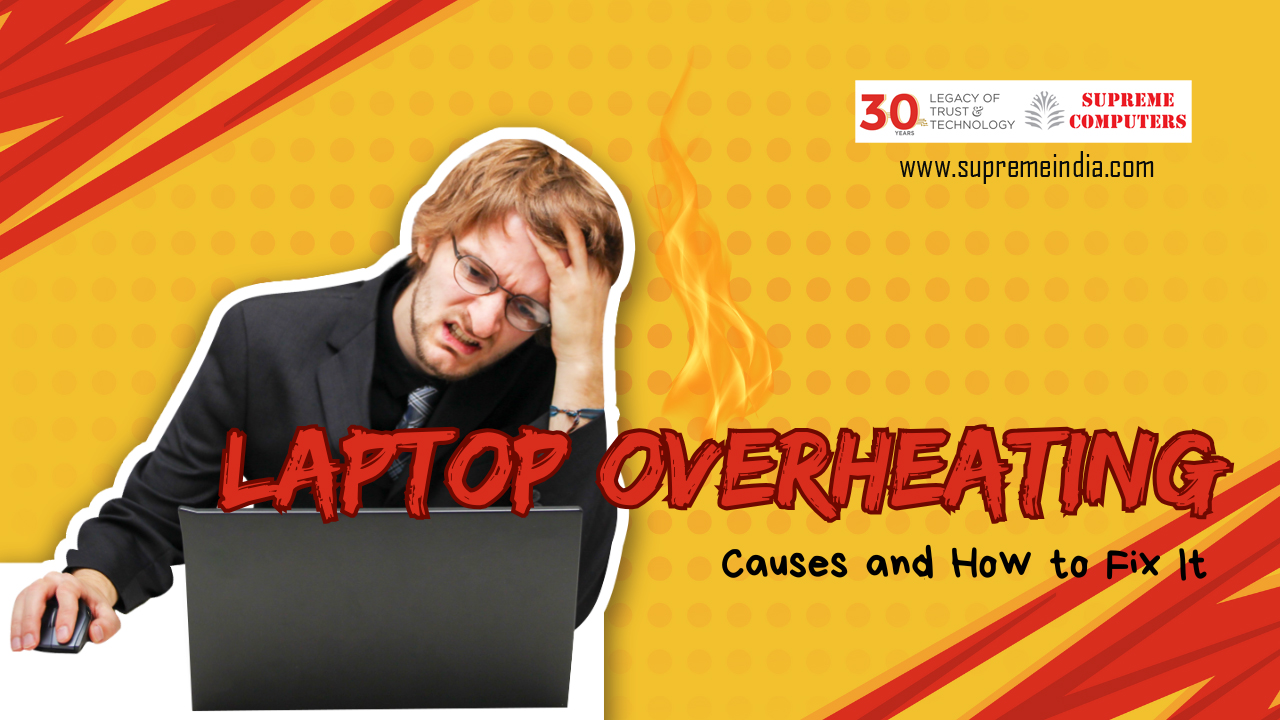How to Fix Laptop Overheating: Tips to Improve Cooling & Performance
"If your laptop sounds like a jet engine, it’s begging for a cooling fix!"
Laptop Overheating: Causes and How to Fix It
Laptops are essential tools for work, gaming, and everyday use, but they often suffer from overheating, leading to reduced performance, unexpected shutdowns, or even long-term hardware damage. If your laptop is running hot, don't worry—this guide will help you understand the causes and provide effective solutions to keep your device cool and efficient.
Causes of Laptop Overheating
1. Blocked Air Vents
Laptops have cooling vents to allow air circulation. Dust accumulation can block these vents, restricting airflow and causing overheating.
2. Faulty or Aging Cooling System
Over time, thermal paste (the material between the processor and heatsink) can dry out, reducing heat transfer efficiency. Additionally, a malfunctioning cooling fan can worsen overheating.
3. Heavy Workload
Running multiple applications, high-performance games, or intensive tasks like video editing can strain the CPU and GPU, generating excess heat.
4. Poor Surface Placement
Using a laptop on soft surfaces like beds or couches can block air vents, trapping heat inside the system.
5. Malware or Background Processes
Malicious software or unoptimized background applications can overwork your processor, leading to unnecessary heat generation.
6. Battery Issues
A faulty or aging battery can overheat, especially when charging or under heavy usage.
How to Fix Laptop Overheating
1. Clean the Air Vents and Fans
Use compressed air or a soft brush to remove dust from the vents and cooling fans. This improves airflow and prevents overheating.
2. Reapply Thermal Paste
If your laptop is overheating frequently, consider reapplying thermal paste to the CPU and GPU. This helps in better heat dissipation.
3. Use a Cooling Pad
A cooling pad with built-in fans provides additional airflow and helps keep your laptop temperature under control.
4. Optimize Software and Close Unnecessary Applications
Monitor resource usage using Task Manager (Windows) or Activity Monitor (Mac). Close background apps that are consuming excessive CPU power.
5. Elevate the Laptop
Using a laptop stand or propping it up slightly improves air circulation, reducing heat buildup.
6. Update Drivers and BIOS
Ensure that your system drivers and BIOS firmware are up to date. Manufacturers often release updates to optimize cooling performance.
7. Scan for Malware
Run a full antivirus scan to check for malware that may be overloading your system.
8. Manage Power Settings
Switch to ‘Balanced’ or ‘Power Saver’ mode in your laptop’s power settings to reduce CPU workload and heat output.
9. Replace Faulty Hardware
If the cooling fan is not functioning properly or the battery is overheating, consider replacing them with new components.
Final Thoughts
Laptop overheating is a common issue but can be easily managed with proper maintenance and care. Regular cleaning, optimizing software usage, and investing in cooling solutions can significantly enhance your laptop’s longevity and performance. If the problem persists despite trying these fixes, it may be best to consult a professional technician.
For high-performance laptops and cooling accessories, visit Supreme India – your trusted IT hardware store in Tamil Nadu!
#TechTips #TechSupport #LaptopOverheating




 Wide range of Products
Wide range of Products Instant Availability
Instant Availability Flexible Payment Terms
Flexible Payment Terms Personalised Sales Support
Personalised Sales Support Installation Support
Installation Support GST Invoice for Tax Credit
GST Invoice for Tax Credit After-Sales Support
After-Sales Support Free Demo
Free Demo
0 Comments